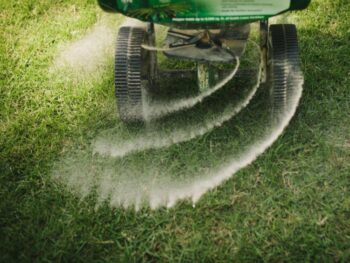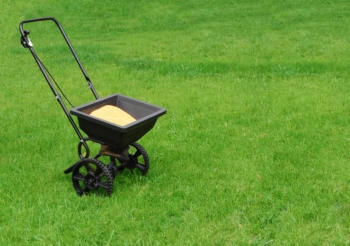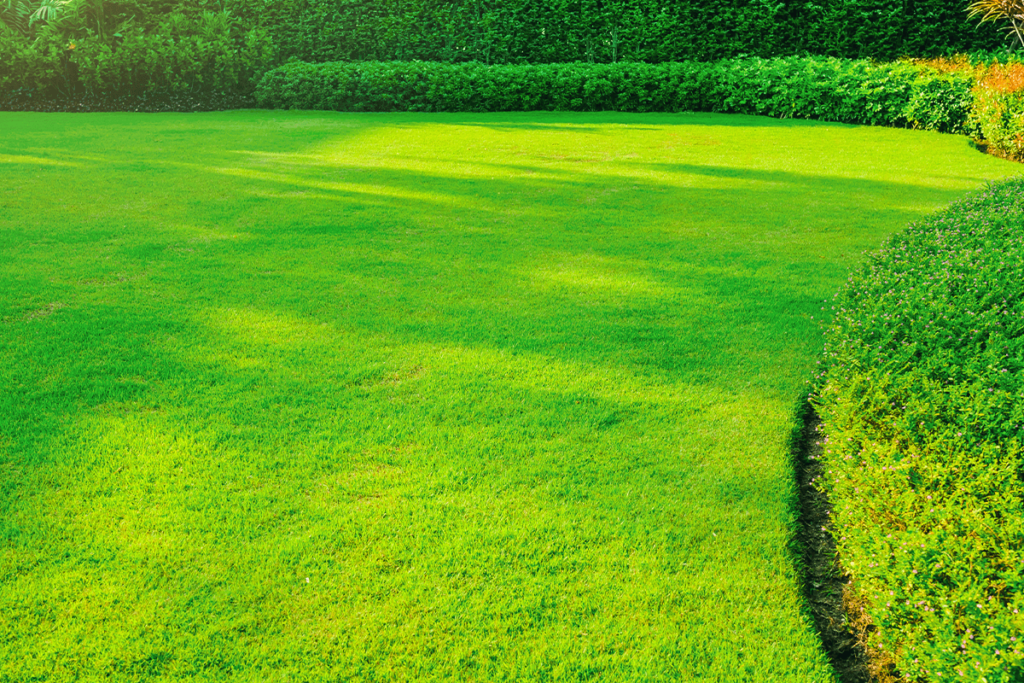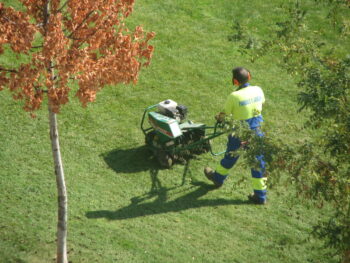A lush, vibrant lawn is always an excellent addition to any home. Achieving that beautiful lawn requires proper care and maintenance, including regular fertilization.
Fertilizing your lawn provides essential nutrients that help grass grow healthy, strong, and resilient. Some 48 percent of people told the researchers that they used fertilizer on their lawns (Mooney, 2015). Just because people are using lawn fertilizers, that doesn’t mean they’re using them correctly.
In this article, we will guide you through the process of applying fertilization on your lawn, discuss the benefits, different types of fertilizers, best practices, and frequency to ensure your lawn thrives.
Do I Need to Fertilize My Lawn?

Fertilizing your lawn offers numerous benefits. Firstly, it promotes healthy grass growth, resulting in a denser and more attractive lawn. Fertilizers supply essential nutrients like nitrogen, phosphorus, and potassium that grass requires for optimal health, color, and root development.
Fertilization also improves the lawn’s resistance to diseases, drought, and foot traffic. Additionally, it helps to control and outcompete weeds, ensuring a more even and uniform lawn.
Without the proper nutrients, your lawn is likely to have more problems with diseases, insects and weeds, which increase the need for pesticide applications (Chalmers and McAfee, n.d.).
Types of Lawn Fertilizer
There are various types of lawn fertilizers available, including granular, liquid, and organic options. Granular fertilizers consist of solid particles that are evenly spread across the lawn using a spreader.
Liquid fertilizers, on the other hand, are dissolved in water and applied using a sprayer. Organic fertilizers are derived from natural sources and gradually release nutrients to the soil. Each type offers unique advantages, so it’s essential to choose one that suits your lawn’s specific needs.

Is Liquid or Granular Lawn Fertilizer Best?
The choice between liquid and granular fertilizer depends on various factors. Granular fertilizers are easy to apply, require less frequent applications, and are suitable for larger areas.
They release nutrients slowly over time and are less likely to cause burns if applied correctly.
Liquid fertilizers, on the other hand, provide fast results, as nutrients are readily available to the grass. They are ideal for quick fixes, spot treatments, and for addressing specific nutritional deficiencies.
Choosing the Right Lawn Fertilizer
Before fertilizing, it’s crucial to identify your grass type and understand its specific nutrient requirements. Different grasses have diverse needs regarding nitrogen, phosphorus, and potassium levels.
Additionally, conducting a soil test can help determine the pH level, existing nutrient levels, and any soil deficiencies. This information will guide you in selecting the appropriate fertilizer blend that matches your grass type and addresses any nutrient imbalances. We offer a soil rejuvenation service to bring your soil back to life.
Preparing the Lawn for Fertilization

Preparing the lawn before applying fertilizers is essential for maximizing nutrient absorption. Mow the grass to the recommended height and remove any debris, weeds, or thatch.
This will ensure the fertilizer reaches the soil surface and the grass receives the necessary nutrients without any interference.
Best Type of Weather to Apply Lawn Fertilizer
Ideally, fertilizers should be applied when the weather is mild, and the grass is actively growing. It’s best to fertilize when the temperature is between 60-80 degrees Fahrenheit and during cooler parts of the day to avoid stressing the grass. Avoid applying fertilizer during periods of drought or extreme heat, as it can potentially harm the moisture-stressed grass.
When Not to Apply Lawn Fertilizer
It’s important to know when not to apply lawn fertilizer to prevent potential harm to the grass and the environment. Avoid fertilizing newly seeded lawns until they have established a strong root system. Additionally, refrain from fertilizing dormant lawns during periods of low growth, such as during winter or heat-stressed conditions.
How Often to Apply Lawn Fertilizer
Lawn fertilizer should be applied 2-4 a year from late winter through early fall. Fertilizer application depends on factors such as grass type, soil condition, and the specific fertilizer being used. Check out our weed and feed schedule.
Typically, warm-season grasses require more frequent fertilization during their active growing seasons, while cool-season grasses need fewer applications. It’s best to follow the manufacturer’s instructions and adhere to a regular fertilization schedule.
Steps for Fertilizing Warm-Season Grasses
For warm-season turfs like Bermuda grass, Zoysia grass, or St. Augustine grass begin by choosing a fertilizer specially formulated for these grass types. Apply the fertilizer evenly using a spreader and then water the lawn thoroughly to help the nutrients penetrate the soil.
Avoid mowing for a couple of days after fertilization to allow the grass to absorb the nutrients effectively. For more tips on keeping your lawn healthy and lush, read one of our other articles titled, “Complete Lawn Care Schedule for Texas.”
Don’t Hesitate to Contact a Professional

Knowing when to call a professional to fertilize your lawn is crucial for optimal results. While many homeowners can handle basic lawn care tasks, there are instances when hiring a professional becomes necessary.
If you lack the time, knowledge, or expertise to properly fertilize your lawn, it may be best to seek professional assistance. Professionals have extensive knowledge of different grass types, fertilizers, and application techniques.
They can assess your lawn’s specific needs, identify any underlying issues, and customize a fertilization plan accordingly.
Additionally, professionals have access to high-quality, commercial-grade fertilizers that may not be readily available to homeowners. By calling a professional to fertilize your lawn, you can ensure that the job is done correctly, efficiently, and with the expertise needed to achieve a healthy and thriving lawn.
Check out our lawn fertilization and weed control service page.
Conclusion
Applying fertilization on your lawn is a fundamental component of proper lawn care. By understanding the benefits of lawn fertilization, different types of fertilizers available, and selecting the right one for your grass type, you can ensure a healthy and thriving lawn.
Remember to prepare the lawn, choose suitable weather conditions, follow a regular fertilization schedule, and adjust based on your grass type’s needs. With proper fertilization, your lawn will be the envy of the neighborhood and provide a beautiful outdoor space to enjoy.
So, let’s get started and give your lawn the nourishment it deserves!
References:
Chalmers, David, R., and McAfee, James, A., (n.d.). Lawn fertilization for Texas warm-season grasses. Texas A&M University Agrilife Extension. https://bexar-tx.tamu.edu/files/2014/08/Lawn-Fertilization-for-Texas-Warm-Season-Grasses.pdf
Mooney, Chris. (2015, March 11). Americans are judging their neighbors’ lawns- with surprising environmental consequences. Washington Post. https://www.washingtonpost.com/news/energy-environment/wp/2015/03/11/forget-what-your-neighbors-think-stop-dousing-your-lawn-with-so-much-fertilizer/





